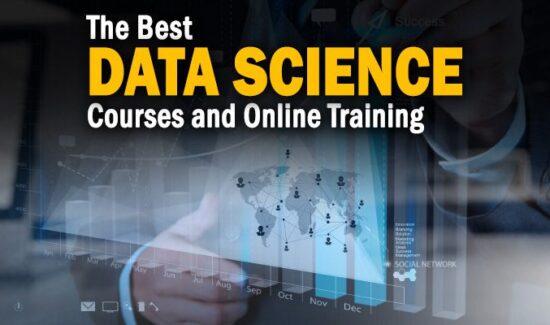2016: Predictive Analytics Tools Go Mainstream


By Aron Ezra
We’ve all been dazzled with the promise of what predictive analytics can do — so much so that one of the recent jokes in tech circles is that when startups are asked, “What’s next for your product?,” they always blurt out: “Um, predictive analytics!”
It’s easy to see why. The ability for technology to accurately anticipate future needs and serve up appropriate content and solutions seems, well, magical. And as computing power and software continue to evolve, we’re seeing companies do increasingly impressive things in the field. Today’s solutions are able to derive actionable insights that are being used not only to recommend music and movies, but to fight terrorism, forecast the weather, manage employees and improve health outcomes. You name the industry, and predictive analytics seems to be making it better.
We’ve already seen huge progress in predictive analytics over the past decade, with several examples capturing headlines. In 2006, Netflix launched their $1 million competition to create a better algorithm for its movie recommendation engine. And in 2012, Target was famously able to correctly guess that a teenage girl was pregnant before her father had a clue — simply by analyzing her shopping habits.
In practice, however, there have been serious hurdles to making predictive analytics work well in most enterprise environments. The problem isn’t what’s theoretically possible; it’s the limits to what most companies have the ability to practically digest and implement.
Take that Netflix competition I just mentioned. The winning model was never deployed. The combination of 800 algorithms used by the model would have required a gargantuan engineering effort for only a 10 percent improvement in predictive ability.
There’s also a real lack of critical skills in many enterprises. Forbes Insights recently found predictive analytics skills are in high demand in more than two thirds of organizations. When the Online Marketing Institute surveyed 747 executives from the Fortune 500 companies on their biggest skill shortages, the number one talent gap was analytical ability. There wasn’t a close second.
On top of that, there is a dizzying array of choices (usually expensive ones) to help interpret all the data. Software solutions come from a who’s who of enterprise Business Intelligence, including IBM, Oracle, SAS, and SAP, and countless others.
In short, this is a world where it is easy to get overwhelmed, fall behind, and under-perform.
A large part of my job is spent developing next-generation predictive tools that are far easier for enterprises to actually use. As CEO of OfferCraft, a software company that helps organizations present marketing offers and employee incentives in the most effective way possible, we need to constantly anticipate which incentives will resonate the most.
We’re now finally starting to see predictive analytics become more accessible and easier to use. Below are five positive trends that will make it easier for enterprises in 2016 (and beyond) to embrace predictive analytics:
1. Taxonomy that is more standardized: Often the hardest part about creating good predictive models isn’t getting the data or building the model; it’s prepping and categorizing the data for analysis. As the field matures, structured data collection will become more standardized and widespread, reducing the time and expense of scrubbing raw data.
2. More collaboration: Many companies are so ultra-protective of their proprietary predictive tools that insights and methodologies are not shared. That’s starting to change as more enterprises insist that their business intelligence partners collaborate more.
3. More willingness to embrace what’s possible with good predictive tools: I still frequently run into skeptical executives who prefer trusting their gut to trusting “science.” Those are the folks who will be left behind.
4. More emphasis on training and data literacy: Many C-suites now include a chief data officer, chief data scientist, or chief analytics officer. This, in turn, has made data literacy a funded priority at most enterprises, and more educational programs are popping up to meet this growing need. There are now more than 100 master’s degree programs in analytics and data science, including new programs at Arizona State, Fordham University and The University of Maryland. I expect the level of data sophistication among enterprise employees will continue to mature in the coming years.
5. Tools are getting cheaper: Good data storage and analytics tools haven’t traditionally been cheap or easy to use. That is changing. Web giants Amazon, Google, Facebook, and Yahoo have developed a massively scalable storage and computer architecture to help companies manage Big Data at a fraction of the cost. Predictive analytics tools are sure to follow, increasing in power and decreasing in cost at roughly the rate of Moore’s Law.
It’s an exciting time to be in the field — we’ve only scratched the surface of what is going to be possible using predictive analytics. 2016 won’t be the year when everything changes, but it will move us much further down the road to more widespread adoption. At least, that’s what my predictive analytics tools are telling me.
 Aron Ezra is CEO of OfferCraft, a software company that helps organizations create better incentives to more effectively motivate their target audiences. Ezra was previously the CEO of MacroView Labs (acquired by Bally Technologies), and a senior executive at several consulting firms. He has given hundreds of presentations to thousands of executives across all industries. He’s been named one of the Most Intriguing People in Las Vegas and one of the Top 10 Rising Business Leaders in the city. Aron is a graduate of Princeton University. Connect with him on LinkedIn.
Aron Ezra is CEO of OfferCraft, a software company that helps organizations create better incentives to more effectively motivate their target audiences. Ezra was previously the CEO of MacroView Labs (acquired by Bally Technologies), and a senior executive at several consulting firms. He has given hundreds of presentations to thousands of executives across all industries. He’s been named one of the Most Intriguing People in Las Vegas and one of the Top 10 Rising Business Leaders in the city. Aron is a graduate of Princeton University. Connect with him on LinkedIn.


































